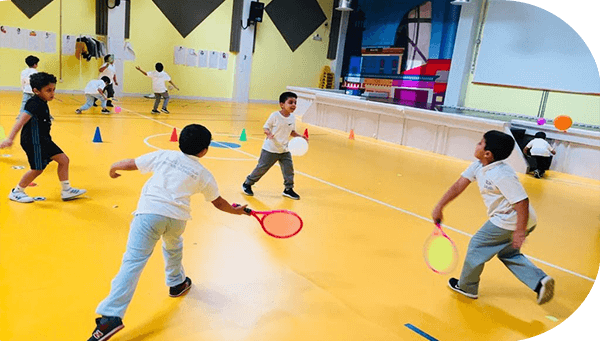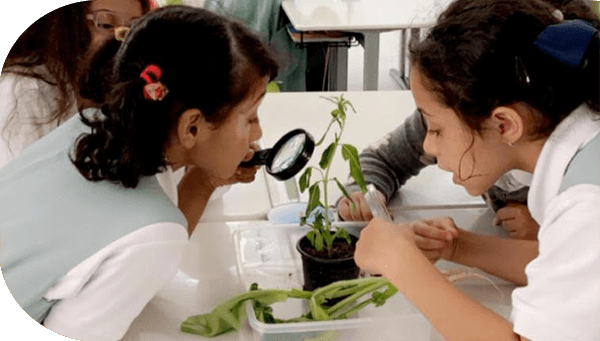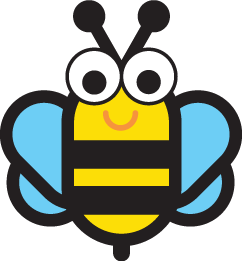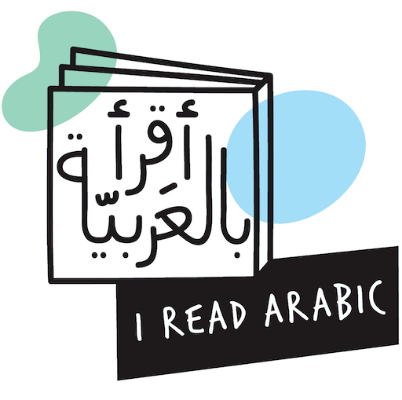The Philosophy and Methodology of Primary Education
In line with our message, we ensure that learning occurs within a bilingual environment which allows children to fully express themselves and transfer knowledge from one language to the other. This will provide them with the ability to receive and apply their knowledge in higher grades which in turn benefits them in their future careers. Our school achieves this by providing a bilingual curriculum which balances between Arabic and English through language subjects, STEAM/ math and science, and special subjects.
These subjects are connected through learning projects and systematic research which span throughout the learning weeks. They combine the skills the student learns from different subjects and provide them with the opportunity to employ them through the process of research and inquiry with their peers.
The outcome is then presented in the annual learning exhibition which is held in the middle of the second semester. Invitations to this exhibition are sent out to the students’ entire family to showcase the projects through exciting oral presentations they have previously rehearsed with their teachers.
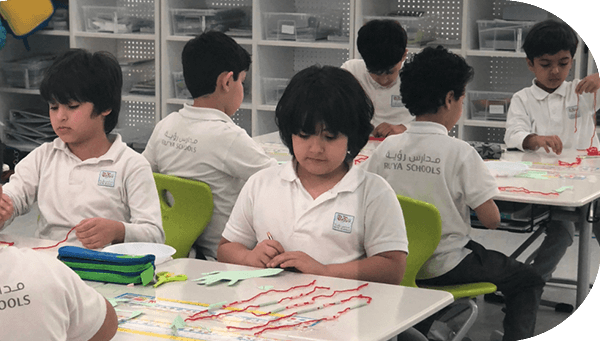
Values in Learning
Our schools follow a value-centered program presented during the morning announcement and throughout the curriculum. One value is presented and discussed in-depth on a monthly basis through stories, activities, and merging the values with lessons.
Learning with STEAM
STEAM is an educational system based on problem solving skills through the merging of science, technology, engineering, art, and math. Its goal is to equip the learner with 21st century skills such as inquiry and analysis, critical thinking, cooperation, communication, and creativity.
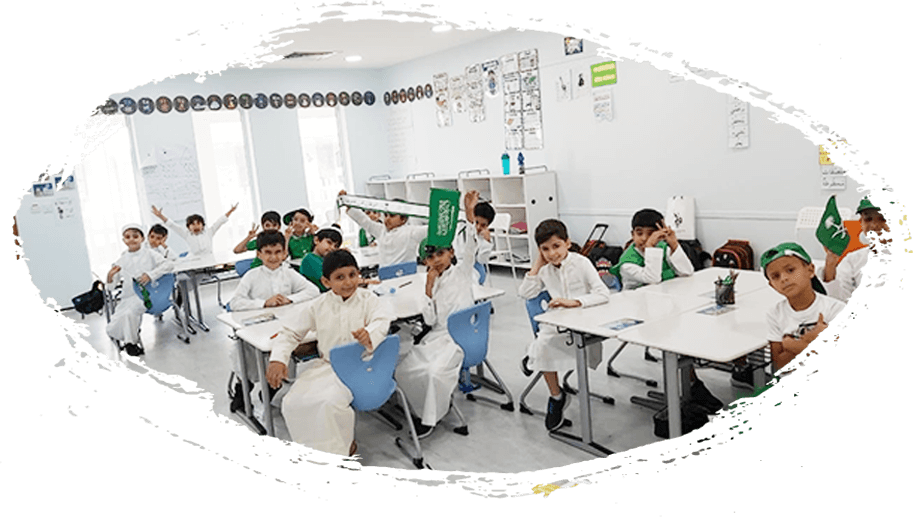
Learning Using Technology
Keeping pace with technological progress is one of the main pillars on which the curricula are built, and therefore we started implementing three-dimensional education through VR (virtual reality). Incorporating 3D education has proven to encourage teamwork and cooperation, which led to positive changes in students’ behavior and communication patterns and improved classroom interaction.
Groups
Students of each class are divided into various smaller groups within the classroom in order to achieve differentiation as we take into account the individual differences between our students. These groups are based on the level each student has reached during the academic year. Each group is provided with in-class activities and homework which align with their particular level during the semester, starting with providing support for low-achieving students to challenging our high-achieving students.
Grade Levels
Our primary years for boys are open from Grades 1 to 3, and for girls from Grades 1 to 6. We aim to cover the remaining academic years in the coming years.
School Day
The average school day begins at 7:00 A.M with the morning announcement, and the first period begins at 7:20 A.M. The day ends at 2:20 P.M. Our school day has 9 periods with two breaks for eating and praying.
Primary Grades Curriculum
-
Taha’s standards. Her standards include a continuous assessment which is based on the progression of the Arabic alphabet (Abjad Hawaz). These standards are supported through personalized accounts for each student through reading progress tracking websites. The websites provide a detailed analysis of the average progress each student has achieved.
In addition, Arabic classes are scheduled in accordance with the Balanced Language Program. The program enables the learning process to progress by teaching listening skills first followed by reading, speaking, then writing in a balanced manner which enables the skills to build up on each other.
- All the necessary resources are employed to implement the program, including e-books for each unit and literary form. In small groups, booklets and book series are provided from different genres such as stories, biographies, informational books, etc.
When teaching English, we rely on the International Common Core standards in accordance with the Balanced Language Program which includes reading out loud, guided reading, independent reading, writing workshops, and story writing. Teaching these reading and writing skills relies on students’ awareness of the various strategies implemented which support learning how to read and write in new and exciting ways through supporting programs such as McGraw-Hill Education.
Reading to the studentsThe teacher builds love for reading in her students through reading different engaging texts including poetry, articles, news, informational texts. |
Modeling WritingModeling correct spelling and writing proper sentences by understanding proper sentence structure and putting ideas into words. |
Shared Reading (according to each unit)The teacher reads with the students various texts according to the grade level of the students and models applying different reading and comprehension strategies. |
Shared Writing (according to each unit)The teacher writes the students’ ideas on a topic and formulates their ideas and turns them into paragraphs, with emphasis on the skills presented. |
Guided Reading (Applying reading and Comprehension Strategies)Students read texts chosen by the teacher according to their reading levels in small groups and are provided with continuous guidance and support from their teacher. |
Guided Writing (Using mind maps)Students write texts of their choice, going through the stages of writing: (determining the topic – brainstorming – writing – editing – evaluation) |
Independent ReadingStudents choose different texts to read and apply reading and comprehension strategies, and summarize content. |
Independent WritingStudents write texts of their choice freely and are given the opportunity to read the text in front of an audience. |
Ruya School follows Common Core standards to compensate for standards not covered by the Ministry of Education’s curriculum. In classes, students use sensory tools and link mathematical concepts to daily life through different word problems.
Emphasis is also placed on presenting students with various mental strategies to enable them to apply them independently to solve equations on their own.
Students are trained to use correct mathematical language when providing an explanation to their answers and when offering feedback on others’ solutions.
In science, we rely on Common Core Standards and use the Ministry of Education’s curriculum to achieve and fulfill those standards.
Science classes that usually take place in a laboratory are based on scientific investigation. The steps of the scientific method include: observation, asking questions, setting hypotheses, conducting experiments, collecting and representing data, and drawing conclusions.
The Ministry of Education’s curriculum is followed when teaching Islamic Studies. These books teach reciting and interpreting the Quran, Prophet Muhammad’s (PBUH) Sunnah and the moral values and morals it contains, and basic acts of worship, while also linking all of this to Islamic knowledge to the human values program followed by our schools.
History
Offers knowledge of how important personalities, events, and developments have shaped other societies during different time periods and in locations.
Geography
Studies knowledge of the Earth, its properties, and how these properties relate to human interactions, and demonstrates an understanding of the interrelationships between human societies and their surrounding physical environment.
National Education
Presents an understanding of the meaning of belonging and loyalty to the homeland and adhering to values and morals by understanding the factors and components that contributed to the formation of national identity, and knowing the foundations and structure of government and its various forms, functions and roles of members of society in it.
Economy
Students are expected to show an understanding of the principles and economic systems and how they function. Students with learn how markets function and the role of the country in developing the national and world economy.
ICT is taught in English while also following Common Core Standards. Students train and apply technological skills enabling them to communicate with others, document their work, and conduct research in an appropriate manner to obtain and share information with others. Students are also trained to use websites that support education and perform various standardized international tests in both languages
In PE, Common Core Standards are followed by demonstrating knowledge of the concepts and principles of movement and strategies that are applied in learning and performing various sports activities, and maintaining a level of fitness to develop the level of health and performance.
Assessments and Evaluation
As part of the educational process, assessments are conducted from the beginning of the school year until the end, including a number of standardized tests.
2- Beginning of the year screening assessment
This assessment divides students into multiple distinct groups according to their strengths in the different basic subjects (Arabic, English, and Mathematics). It also serves as a starting point for teachers to understand their students in order to provide support and develop them using differentiation through the following:
- Designing activities for each distinct group during the lessons taking into account individual differences and the objectives of the lesson without alerting students to these differences.providing differentiated homework for each group of students according to their abilities and needs.
2- Periodic assessments
Conducted weekly and by the end of each unit.
3- Quarterly assessment:
Formative and summative assessments are conducted in light of each quarter’s expectations and reflected upon and analyzed by the following questions
- What do we want our students to learn?How will we know that every student has learned?
- How will we respond when some students are not learning?
- How can we extend or enrich the learning of students who have demonstrated proficiency?
4- Final Exams
Conducted by the end of each term.
5- End of school year screening assessments
6- Standardized Tests
Standardized Tests
Tala Arabic Language Test is the first assessment dedicated to Arabic Language Arts Standards based on the World Languages Initiative for grades three and above. It is the first computer-based assessment in Arabic that adapts automatically according to student performance, as it tests vocabulary, reading, and writing for Arabic-speaking students. The test provides a report of both individual student progress and the effectiveness of the Arabic Language Arts program.
Mubakkir is an assessment tool used to measure young learners’ skills and progress in Arabic through early and frequent measurement of their performance.
Beginning in Kindergarten to Grade 2, teachers and administrators get an easy-to-use tool to systematically collect, record and analyze student data in order to implement teaching methods, and develop special evidence-based treatment and intervention strategies that are tailored to the individual needs of each student.
The assessment also makes it easier for teachers to create a running record of achievement for pre-reading and early reading benchmarks ranging from 6 to 10 that have been identified by experts as essential to developing young learners’ reading skills. These include: distinguishing phonemic structure of words, distinguishing phonetic units, pronouncing letters, linking letter and phoneme, visual recognition of words, oral reading skill, knowledge of linguistic vocabulary, and reading comprehension.
Map test is an interim assessment created by NWEA (Northwest Evaluation Association) to measure academic progress in math and reading in English. The standardized test is held two to three times during the academic year. The NWEA MAP test is a computer-adaptive standardized test, meaning that each student is given a unique set of test questions based on their answers for previous questions. If a student answers a question correctly, the test dynamically adjusts and presents a more challenging question. If a question was answered incorrectly, the test adapts to present an easier question. At the end of the test, most students answer about half of the questions correctly. Through this, teachers can track the progress of an individual student and their class as a whole. Students with similar scores generally need to be taught the same set of skills in order to show progress.
These tests also provide inferential data about the typical development of students who are in the same grade level and have the same subject and the same level of achievement at the beginning. This data is often used to help students set goals and understand what set of skills they need to be taught in order to achieve their goal.
Supported Learning
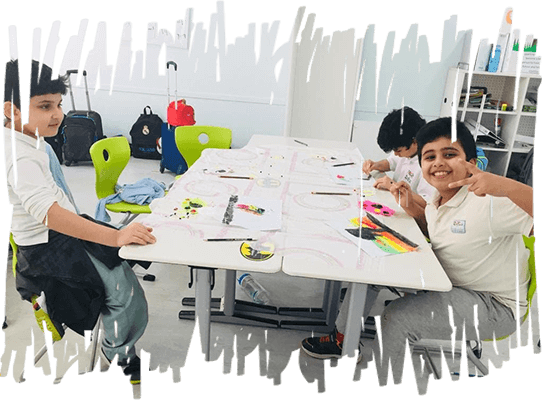
Behavior Management
Field Trips
Field trips aim to form a relationship between the children and the surrounding world around them to give them the opportunity to interact directly with their environment and develop their senses and their abilities to observe, experience and discover.
Recreational Activities
Recreational activities aim to entertain and bring joy to the children through monthly activities for children and their teachers.
Values they have been taught are reinforced during these activities.
Parents-School Partnership
- A general meeting for mothers at the beginning of the academic year to present the school’s policies and curriculum implementation during the school year.
- Two individual meetings for each mother, the first in the middle of the first semester after the results of the first quarter, and the second in the middle of the second semester after the results of the third quarter.
- Monthly one-on-one meetings for mothers of supported learning students.
- Meetings for those who wish at any time during the year. The mother can make an appointment with any teacher or official at any time of the year through the phone, a direct meeting, or sending an email.
All students in kindergarten and primary classes participate in the festival, where they sell products made by them in a large festival attended by their parents. All the proceeds are allocated to sponsoring orphans from (The Charitable Society for Orphan Care in the Eastern Region Benaa’.
Student Policies and Regulations
Administration-Parent Communication
